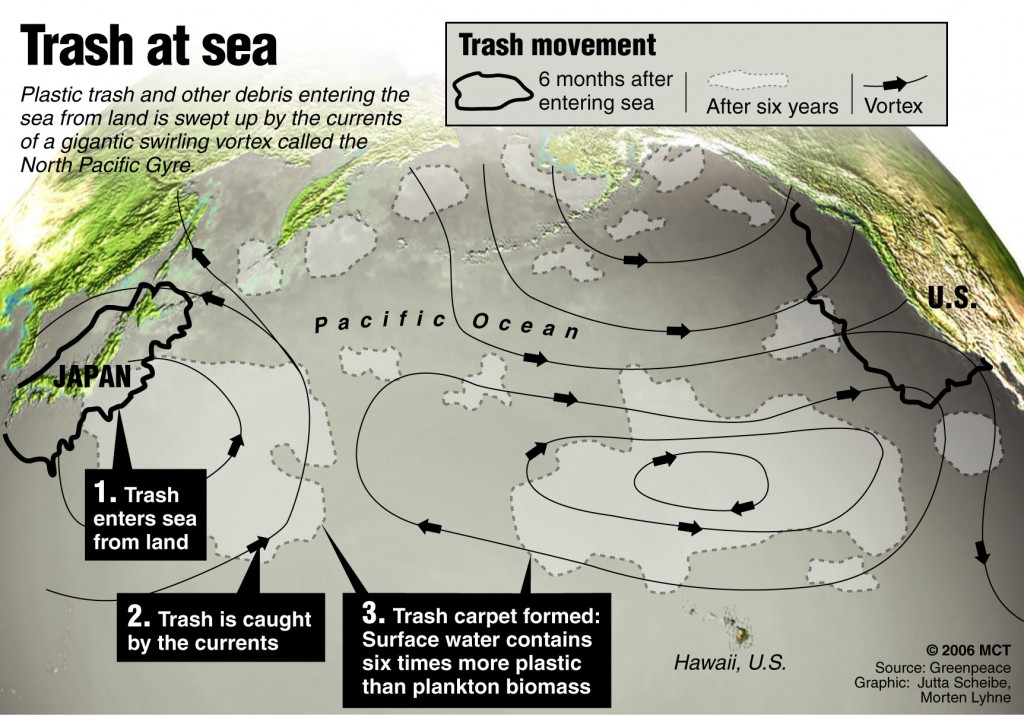Imagine what's known as the Great Pacific Garbage Patch and what comes to mind are floating bottles, flip flops and coolers blown about by wind and currents. In reality, the patch, and countless others spread across the planet, are nearly invisible, vast "peppery soups" of microscopic plastic.
Now, thanks to a pair of University of Miami oceanographers, and decades of data from government drifters used to monitor ocean conditions, those patches will be easier to find.
In a new study, published in the journal Geophysical Research Letters, Josefina Olascoaga and Francisco Beron-Vera looked at data from more than 15,000 drifters deployed by the National Oceanic and Atmospheric Administration since the early 1990s and found something surprising: where an object ends up after it is tossed in the ocean is determined as much by the size of the object itself as wind and current.
With the result, she said, "we can better follow the pollution."
Earlier efforts to track debris relied heavily on factoring in wind and currents. Scientists call it the Ekman convergence, named for the 20th-century Swedish oceanographer Vagn Walfrid Ekman who, basically, spent a lot of time looking at icebergs to figure out that objects don't get pushed in a straight line by winds and currents, but spiral because of the Earth's gravitational pull and the way water absorbs energy.

In looking at the drifters, Olascoaga and Beron-Vera determined that the size and shape of the object also affected where it landed, which logically seems like a no-brainer but documenting it turns out to be far more complex.
The pair, whose research focuses on how the ocean mixes things, started by looking at the drifters and the vast trove of information they provide. Drifters have been deployed for decades by the National Oceanic and Atmospheric Administration to track changes in temperature, salinity and currents to help predict short and long term climate patterns. (Schools can even adopt one.) They have been used for everything from monsoons in the Arabian Sea to what happens between the air and sea during hurricanes.
The drifters are actually made of two parts: a buoy, or surface float that includes a battery and instruments to track wind, temperature or other conditions, and a drogue which floats about 50 feet below the surface to monitor conditions in the upper ocean. Sometimes, the drogue becomes untethered.
Olascoaga and Beron-Vera noticed that the two moved in different ways. While they both ended up getting swept into subtropical gyres, eventually reaching the center where garbage patches collect, the untethered drogues got there faster. The speed at which they arrived was too fast to be driven by Ekman's theory on wind and current propulsion, leading the pair to wonder what else was driving them. In a complex model, they determined that it was also the size and weight of the untethered drogues.
By coming up with a model, oceanographers can now better track ocean plastic, a growing problem threatening both marine life — one study found baby fish now prefer eating micro plastic to plankton — and anyone who eats fish.
"Plastics never really go away. They just break down over and over again," spokeswoman Diana Parker said in a NOAA podcast explaining the problem.
The research can also be applied to other objects — ships lost at seas, downed aircraft and spilled oil — where accuracy and speed can be a matter of life and death.
"Every step we do to understand more of the question, how things are moving in the ocean," Olascoaga said, "helps us solve all these other problems."